Well folks, we’ve reached the end of CicLAvia season for 2023, a season of firsts. We’ve had a total of eight seven iterations of America’s Biggest Open Streets Event in 2023 – the most per year to date – starting in February with a shivering CicLAvia on Sherman Way, scenicked by the snowcapped Santa Susanas. It was the first CicLAvia to take place in the Winter season, and rightfully, the coldest-ever, with the mercury registering 51º that day. In April we had an encore romp through Washington and Venice Boulevards in Mid-City and Pico-Union, and on the streets of Good Ol’ Watts in May we had the inaugural CicLAmini – a CicLAvia condensed into one little, pedestrian-oriented, bite-sized morsel. Less than a month later, we returned to the Southside with a Juneteenth dive down South Vermont and Century Boulevard (We Love It!). And in August, we had…the first-ever weather-canceled CicLAvia, where the route from Koreatown to Hollywood was washed out with the rain and uncertainty brought on by Tropical Storm Hilary. In September, we had our second CicLAmini, this time through the streets of the NoHo Arts District (the first fully-overcast CicLAvia, where the sun did not actually shine), followed in October celebrating 13 years of CicLAvia with Another Perfect Day through the Heart of Los Angeles on the viaduct carrying 6th Street (We Love It!).
This Sunday’s 6-mile CicLAvia route treads through familiar territory. Not only is it the third event in South Los Angeles this year (No organized NIMBY groups to oppose any routes on this side of the 10, that’s why…), but the fourth route to incorporate Martin Luther King, Jr. Boulevard. This route was first covered in the general sense on December 7, 2014 in pretty much the same alignment, save for the western end going down Leimert Boulevard (as Crenshaw was still occupied with Metro (K) Line construction activity). The December 5, 2021 CicLAvia went down MLK from Central Avenue to Crenshaw, turning north to meet the (E) Line on Exposition. A year later, during the December 4, 2022 event, the alignment ran along MLK from Vermont, before veering south on Central towards 103rd Street in Watts. So it’s a pretty safe bet that the December 2nd/9th, 2024 CicLAvia will include Martin Luther King Jr. Boulevard in some form…
Sunday’s CicLAvia is projected to be a mild 71º under partly cloudy skies. Expect a festive atmosphere with people in Santa Claus outfits, Lakers, LAFC, Kings and Rams gear and another great time. The Militant will definitely be there for his 49th straight CicLAvia, of course. So see you or not see you on the streets this Sunday!
Oh yeah, if you found this Epic CicLAvia Tour guide useful and visit any of these sites, please add the #EpicCicLAviaTour hashtag to any social media post that includes it. The Militant will be glad to re-tweet!
And if you appreciate The Militant’s work, kick him a little love via PayPal! He *hates* asking for money, but you know how it is these days…A Militant’s gotta pay his bills! He sacrifices a lot of his time to do this, so your support is much appreciated!
To support The Militant Angeleno: https://www.paypal.com/donate/?hosted_button_id=K5XC5AM9G33K8
The Militant would like to thank Ronald Coolbaugh for his continued support within the past month!
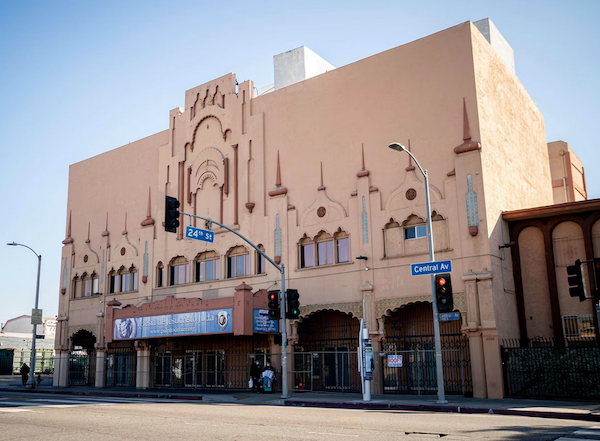
1. Lincoln Theater
1926
2300 S. Central Ave, South Los Angeles
From 1927 to the 1950s, this Moorish Revival theatre, designed by John Paxton Perrine featured the finest live entertainment by Black performers, to a predominantly Black audience (though notable White folks like Charlie Chaplin dug it as well). It was even nicknamed the “West Coast Apollo” during its heyday, which featured the likes of Duke Ellington, Nat King Cole and Billie Holliday gracing its stage. In 1962 the building was purchased by the First Jurisdiction of the Church of God in Christ and remains a house of worship today, this time as the the Iglesia de Cristo Ministries Juda. The Lincoln Theater building was designated as a City of Los Angeles Historic-Cultural Monument in 2003 and was added to the National Register of Historic Places in 2009. Though it appears disused, the theater’s history continues, as in February 2023, it was named as one of 40 sites in the U.S. to receive $3.8 million preservation grant by the National Trust for Historic Preservation’s African American Cultural Heritage Action Fund.

2. Second Baptist Church
1926
2412 Griffith Avenue, South Los Angeles
Built around the same time as the Lincoln Theater is this building that has always been a church. But it’s one building that’s rich in African American history. It was the host venue for the NAACP’s national conventions in 1928 (the first-ever on the West Coast), 1942 and 1949. In 1962, Malcolm X spoke at a meeting held at the church. And Dr. Martin Luther King Jr himself spoke here in 1964 and 1968 — the latter appearance, just two weeks before he was martyred in Memphis. Tennessee. To top it all off, this Lombardy Romanesque Revival building was designed by none other than famed African American architect Paul R. Williams, who designed many buildings around Los Angeles, most notably this one. This building is also designated as a City of Los Angeles Historic-Cultural Monument (1978) and was likewise added to the National Register of Historic Places (2009).
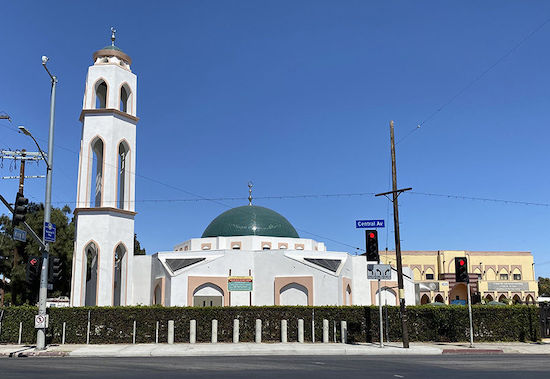
3. Masjid Bilal Islamic Center/Site of Elks Lodge
1929
4016 S. Central Ave, South Los Angeles
This mainstay of the local Muslim community since 1973 also has a deep history in the local Black community. The original building was originally built in 1929 as the home of the local Elks club. But it was no ordinary Elks Club (who discriminated against Black membership). It was run by the Improved and Benevolent Protective Order of Elks of the World, an African American-run organization founded in Cincinnati, Ohio in 1898 that functioned as a fraternal order for people of color. Though obviously not directly affiliated with the white Elks club, it is run with the otherwise identical customs and traditions, and with nearly half a million members worldwide, is the largest black fraternal organization in the world. A new mosque building, fronting Central Avenue, has been under construction since 2019, which features the tallest minaret in California.
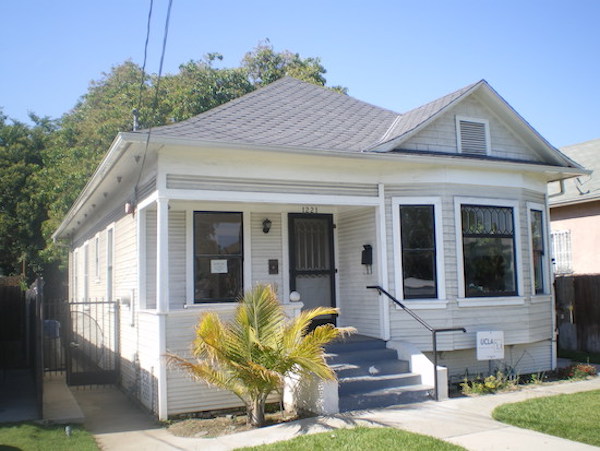
4. Ralph J. Bunche House
1919
1221 E. 40th Place, South Los Angeles
The Central Avenue corridor was home to Los Angeles’ Black community, primarily due to the racial covenants that restricted them from owning homes elsewhere in the city. But great things can come from places of injustice. Ralph J. Bunche was a teenager arriving with his family from Detroit, by way of Ohio and New Mexico, who attended nearby Jefferson High School and went to UCLA, graduating as the valedictorian at both schools. He went on to Harvard, where he earned his Ph.D in Political Science (the first African American to receive a doctorate in PoliSci from a U.S. university), and later was one of the founders of the United Nations. In 1950, due to his diplomatic work in the negotiations that ended the 1948 Arab-Israeli War, he won the Nobel Peace Prize — the first non-White person to ever win the esteemed award (Come to think of it, we could use his expertise right now…). And he once lived right here, just two blocks east of the CicLAvia route.
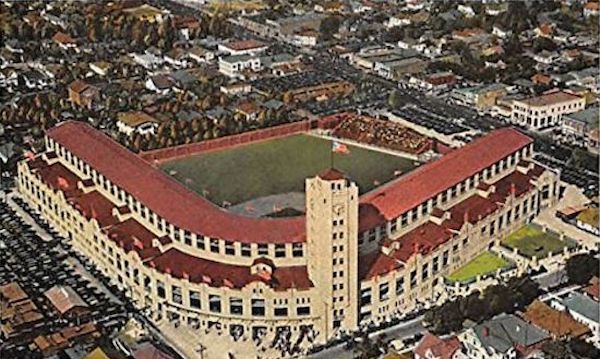
5. Site of Wrigley Field
1925 (demolished 1969)
Avalon Blvd & 42nd Place, South Los Angeles
Just a few blocks south of the CicLAvia route is Gilbert W. Lindsay Park, named after Los Angeles’ first African American city councilman. But years ago, this was the place where home runs, strikeouts and 7th Inning Stretches took place in the City of Angels. And yes it was a city of Angels, as the Los Angeles Angels of the Pacific Coast League made the 22.000-capacity Wrigley Field (named after the chewing gum magnate, who had several stakes in Southern California, including Catalina Island) its home. And as any truly militant Angeleno knows, the ivy-and-brick Chi-town tourist trap, though 11 years older, was originally called Weeghman Park and wasn’t dubbed Wrigley Field until 1927, which made Los Angeles’ Wrigley Field the first Wrigley Field ever. The stadium also was popular with TV and movie shoots, such as Damn Yankees and The Twilight Zone. In 1961, it literally went Major League as the American League expansion team Los Angeles Angels of Los Angeles played its home games there before moving to Dodger Sta, er, Chavez Ravine for the next four seasons, and then finally moving down the 5 to Anaheim. Wrigley Field was also home of the Los Angeles White Sox, a club in the short-lived, 6-team West Coast Negro Baseball Association, a Black minor league co-founded by Olympic gold medalist Jesse Owens which lasted but a single season in 1946. Yes, there’s a baseball field in the park, but it’s not the same location as the original diamond.
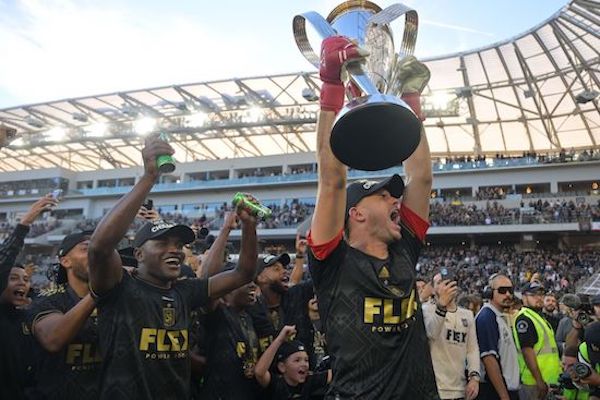
6. BMO Stadium
2018
3939 S. Figueroa St, Exposition Park
Home of the 2022 MLS Cup Champion Los Angeles Football Club soccer team, this $350 million, 22,000-seat venue is the first open-air stadium to be built in the City of Los Angeles since Dodger Stadium opened in 1962. Known from its 2018 opening as Banc of California Stadium before the naming rights were bought by the Canada-based Bank of Montreal (Soorry, eh?) in January 2023, BevMo BMO Stadium was built on the former site of the 16,000-seat Los Angeles Memorial Sports Arena (1959-2016), which was the first Los Angeles home of the Lakers (1960-1967), the Clippers (1984-1999) and hosted the Boxing matches during the 1984 Olympics. BMO Stadium is also the home venue of the Angel City FC National Women’s Soccer League team and will host the Men’s and Women’s Soccer tournaments during the 2028 Olympics.
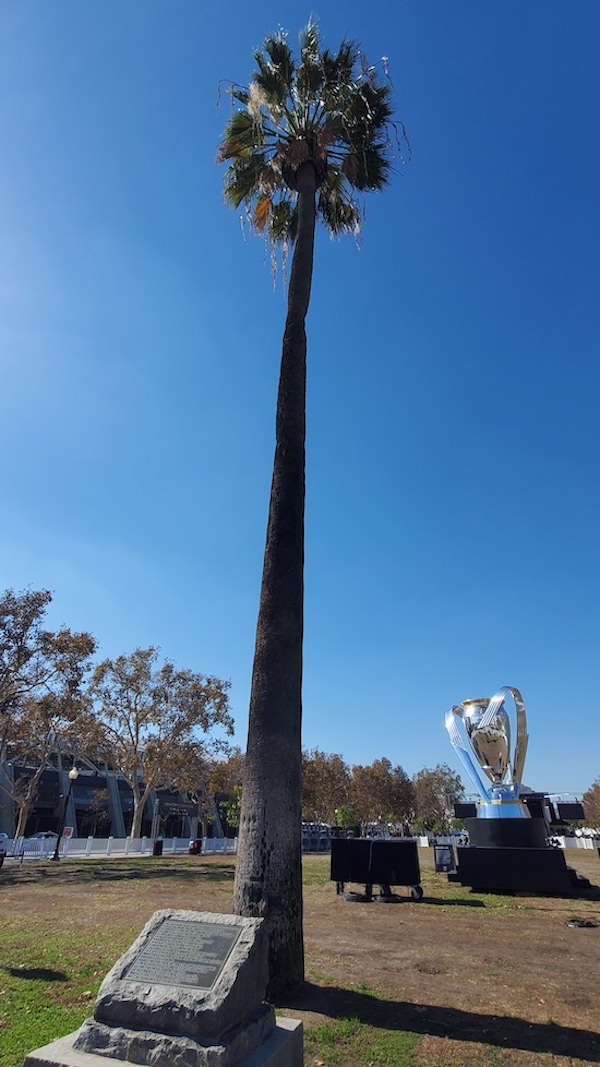
7. Historic Southern Pacific Palm Tree
Re-planted 1914
3901 S. Figueroa St, Exposition Park
Back in the late 1800s-early 1900s, the Southern Pacific Railroad operate out of a train station called the Arcade Station, on 5th and Alameda streets. A lone palm tree stood outside the station and functioned as a landmark for arriving passengers coming in from San Francisco or points east. In 1914 (dude, over a hundred years ago) the Arcade Station was demolished (no, it wasn’t consumed by a fire) to make way for a more modern station, called Central Station, and the palm tree had to go. So beloved was the palm tree that, instead of being cut down, it was moved to Exposition Park, where it has stood ever since. Like its neighbor the Space Shuttle Endeavour, it was a popular icon back in its day, and it’s probably safe to assume that its transport through town was an event in itself. A little-known historic marker at the base of the tree tells the whole story. So if you want to see a palm tree that was planted there over 100 years ago, there you go.

8. Los Angeles Swimming Stadium
1932
Bill Robertson Drive & Park Lane, Exposition Park
The Coliseum’s little bro, Los Angeles Swimming Stadium was the 10,000-seat venue for the 1932 Olympic swimming, diving and water polo competitions, as well as the aquatic portions of the pentathlon event. Olympians such as Buster Crabbe swam in its waters. After the games, it became a public pool, and in the ’50s, USC’s swim team used it as their training and competing venue. After over a half century of wear, and damage from the 1994 Northridge Earthquake, the swim stadium was renovated in 2002 and operates today as the LA84 Foundation/John C. Argue Swim Stadium. Marco…Polo!
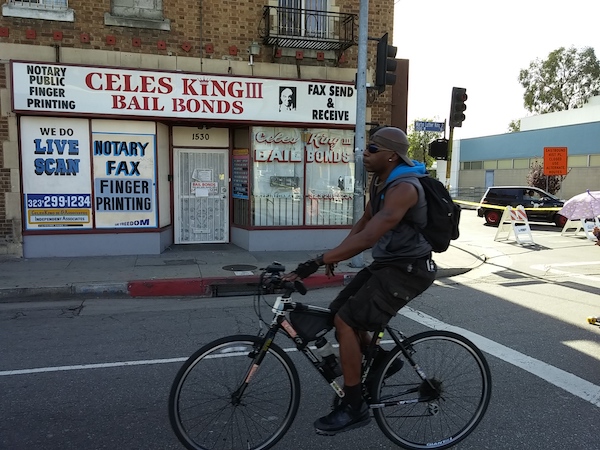
9. Celes King III Bail Bonds
1949
1530 Martin Luther King Jr Blvd, Vermont Square
Why is a bail bonds joint listed in the Militant’s CicLAvia tour? WTF? Well, before 1983, this street was known as Santa Barbara Avenue. Celes King III was the person who lobbied to change the name of the street to Martin Luther King Jr. (no relation) Blvd. A real estate broker, bail bondman, outspoken Republican, former Tuskeegee Airman, failed City Council candidate, co-founder of the Brotherhood Crusade and founder of the annual Kingdom Day Parade on the MLK Holiday, he successfully lobbied the L.A. City Council in 1983 to re-name Santa Barbara Ave. after the slain civil rights leader — albeit not without controversy. Some of his critics accused him of doing it to irritate then-Mayor Tom Bradley, one of his political enemies, and others have criticized CK3 of conflict of interest (his residence – he lived in the apartment upstairs – and his bail bonds business were located on Santa Barbara Avenue after all) and even ego trippin’ (the short-hand street signs say “King Bl”– the same as his own last name). Whether this was a self-aggrandizing stunt or a genuine tribute to an American hero, we will never know: Celes King III died in 2003. But here’s one interesting CicLAvia route fact: His father, Celes King, Jr. was the owner of Central Avenue’s famed Dunbar Hotel back in its Jazz Age heyday.
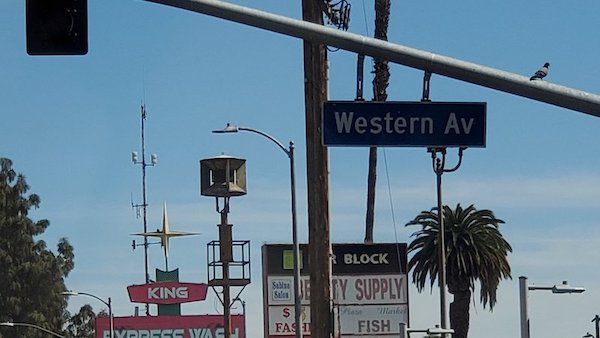
10. Civil Defense Air Raid Siren #60
1940
1662 W Martin Luther King Jr Blvd, King Estates.
If the Russians ever invade Los Angeles, just know that we have 179 Civil Defense air raid sirens in place around the City (which may or may not still work…), like this one along the CicLAvia route, which is identified as Civil Defense Siren #60 at Martin Luther King Jr. Blvd and Western Avenue. Built in 1940, this siren is classified as a Federal Model SD-10, or the “Wire Spool” style.
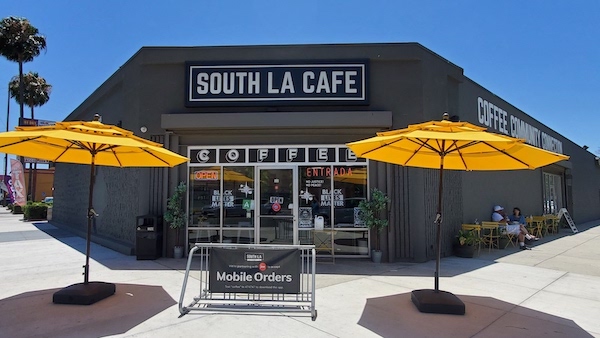
11. South LA Cafe
2019
1700 Browning Ave, King Estates
Opened in November 2019 by owners Celia Ward-Wallace and her husband Joe – both longtime residents of the area – to address food inequality (they also own the South L.A. Market on the other side of the minimall) and create a cultural hub in the neighborhood, South L.A. Cafe not only sells caffeinated fare and pastries, but also provides a venue for open mic and poetry performances. The cafe near the corner of Western and MLK also sells various clothing which bears “South L.A.” and “South Central” for locals who wish to represent with neighborhood pride (or for those from outside the area who just want to front). The establishment was also featured in the 2023 Hulu comedy series, This Fool, portraying the protagonists’ rival business Guilt Free Cafe. South LA Cafe has since grown into a local chain, with two additional locations in Baldwin Hills (at the Kaiser Permanente clinic) and in Hollywood (at the Hollywood Bowl).
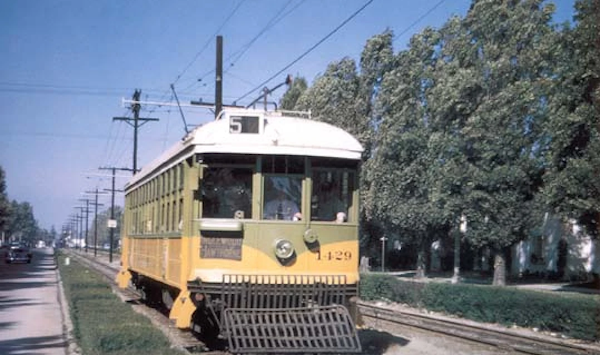
12. Los Angeles Railway Yellow Car Right Of Way
1902
Leimert Blvd between Martin Luther King Jr Blvd and Vernon Avenue
See that nice, wide, landscaped median branching south of MLK through Leimert Park? Could you ever guess what it used to be? Yup, it was the right-of-way for the Yellow Car trolleys of the Los Angeles Railway, part of The 5 Line, which ran from Eagle Rock (ya, rly) to Hawthorne. Actually The CicLAvia route from the 110 Freeway to Leimert Avenue was part of the 5 Line, and because of that Leimert Park was originally planned as a transit-oriented community (it was also originally planned as a whites-only community, but so much for that, eh?) Incidentally, part of this same historic Yellow Car Line, along both Crenshaw Blvd and Florence Avenue, is used today as part of Metro’s (K) Line. The Right of Way was also dedicated in 2009 as “Joyce Perkins Parkway” in recognition of the community work of co-founder and former executive director of the nonprofit Los Angeles Neighborhood Initiative (LANI).
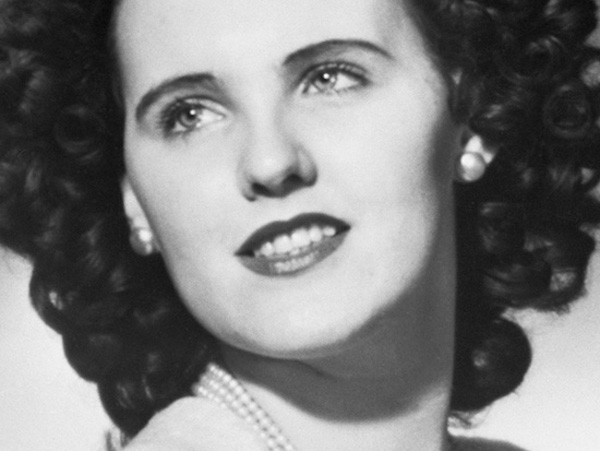
13. Black Dahlia Body Site
1947
3825 S. Norton Ave, Crenshaw District
On the morning of January 15, 1947, the mutilated body of 22 year-old waitress Elizabeth Short, a.k.a. “The Black Dahlia” – the victim of arguably the most famous unsolved murder case in Los Angeles history – was discovered on this site (at the time an empty lot; the house was not built until 1956) by a local woman walking with her young daughter. Short, a transplant from Boston who was reportedly an aspiring actress, was missing the week prior to the discovery of her body, and the case garnered national headlines due to the gory details of her murder. The LAPD’s investigation yielded over 150 suspects but no arrests. The cultural intrigue surrounding Short’s death became a huge influence on the 1940s ‘Los Angeles Noir’ phenomenon.
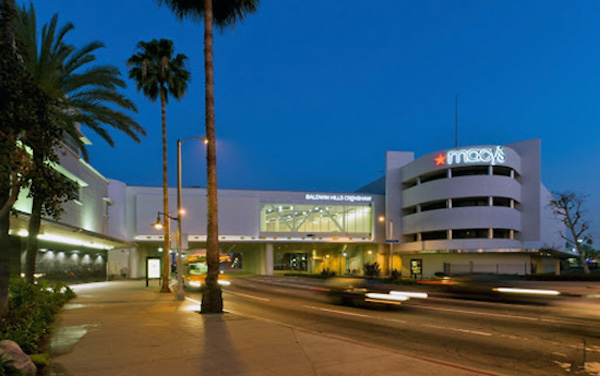
14. Baldwin Hills Crenshaw Plaza
1947
3650 Martin Luther King Jr. Blvd, Crenshaw District
Originally known as the Broadway-Crenshaw Center, it opened on November 21, 1947 as one of the first auto-centric regional shopping centers in the US. The Streamline Moderne shopping center, designed by Albert B. Gardner, was home to a 5-story Broadway department store, a Vons supermarket and a Woolworth’s discount store. In 1949, a Silverwoods clothing store opened, and the landmark bridge over MLK (then known as Santa Barbara Avenue) was built to connect with the existing 1947 May Company building on the north side of the street. Today’s version of the shopping center came about during a late 1980s remodel.
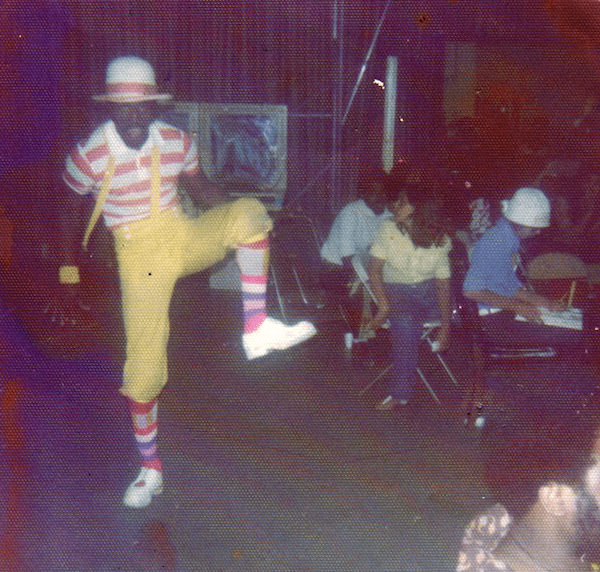
15. Don “Campbellock” Campbell Square
2020
Stocker Street and Crenshaw Boulevard, Crenshaw District
This streetcorner was dedicated by the Los Angeles City Council in January 2020 for the 1970s dancer and choreographer whose robotic, hydraulic and acrobatic “Campbellock” dance – known as “locking” and the predecessor of “pop-locking” – was immensely influential in hip-hop and African American performing arts as a whole. In the late 1960s, Campbell studied dance at Los Angeles Trade Tech College. In 1971, he earned fame as one of the featured dancers on the groundbreaking TV show, Soul Train, which broadcasted his dance moves to a national audience. After leaving the show in 1973 over a dispute whether dancers on the show should get paid, he formed a dance group known as The Campbellock Dancers, later known as The Lockers, of which choreographer and “Mickey” singer Toni Basil, What’s Happening actor Fred “Rerun” Berry and Breakin’ actor/dancer Adolfo “Shabadoo” Quinones” were all onetime members of the group. A longtime resident of the South Los Angeles area, Campbell passed away in March 2020.
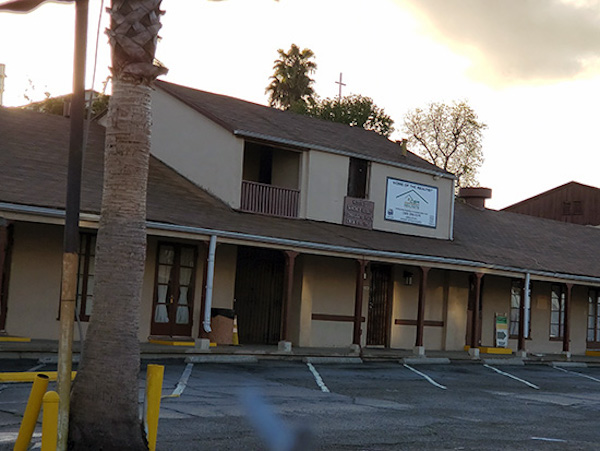
16. Sanchez Adobe – Oldest Building in Los Angeles
1791
3725 Don Felipe Drive, Baldwin Hills
In the streets behind the Baldwin Hills Crenshaw Plaza stands what may or may be the oldest building in Los Angeles. The crown was long believed to belong to the 203 year-old 1818 Avila Adobe on Olvera Street, but further historical research in 2012 revealed that this structure, originally part of Rancho La Cienega o Paso de la Tijera, dates back some 50 years prior to when it was deeded to Don Vicente Sanchez in 1843, making it around 230 years old. The building was later owned by Baldwin Hills’ namesake Elias Jackson “Lucky” Baldwin, who brought freed slaves to work in his homestead after the Civil War. The historic structure – 30 feet wide and two stories tall – has been integrated into a large single-story building built in 1927. It is currently home to Agape Church of Los Angeles.
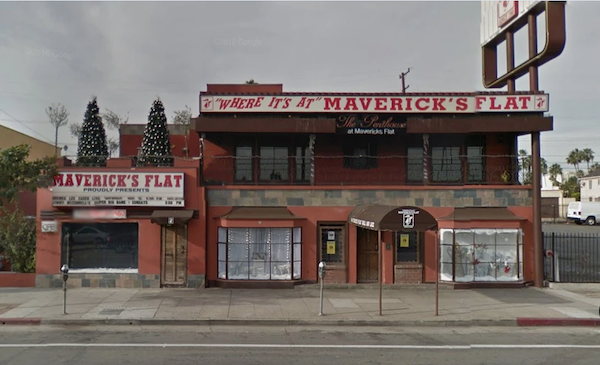
17. Maverick’s Flat
1966
4225 Crenshaw Blvd, Leimert Park
Founded in the mid-1960s by stage producer John Daniels, Maverick’s Flat was an influential nightclub and concert venue that featured premiere and up-and-coming jazz, soul and R&B artists. Motown soul icons The Temptations – dude, The Temptations – performed on its opening night in February 1966, and artists such as Marvin Gaye, The Commodores, Parliament, and Ike and Tina Turner all graced its stage. The venue took up the mantle as the focus of Black Los Angeles’ entertainment and arts scene as Central Avenue’s influence faded away, shifting the epicenter west to Leimert Park where it remains today. It was also “the place to be seen” as Hollywood celebrities such as Marlon Brando were known to have hung out there. It closed down as a regular concert venue in the 1980s and remained operating as a rental/special events venue. Maverick’s Flat received a Los Angeles City Historic-Cultural Monument designation in 2000 and the building was renovated in the 2010s, and in 2021, the establishment re-opened as the rental venue Nina Roza’s Penthouse at Maverick’s Flat.
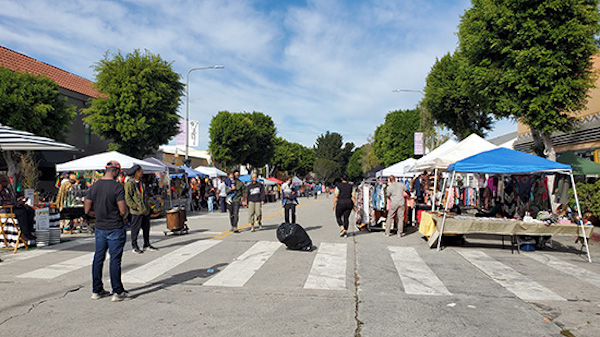
18. Leimert Park African Marketplace & Drum Circle
c. 2010
Degnan Blvd between 43rd Street and 43rd Place, Leimert Park
What can The Militant say about Leimert Park? The heart and soul of Los Angeles’ African American community can warrant an Epic Guide of its own. From iconic institutions like the Barbara Morrison Performing Arts Center to the jazz-centric World Stage to the eponymous city park that has been the site of countless celebrations, rallies, demonstrations and memorials over the years, where the annual Kingdom Day Parade on Martin Luther King Jr. Day ends up. It’s what the late filmmaker and Los Angeles native John Singleton once described as “The Greenwich Village of L.A.’s Black Community.” The true flavor of Leimert Park happens every Sunday from 10 a.m. to 5 p.m. when Degnan Boulevard is transformed to an outdoor street market which had its origins in the annual Labor Day weekend African Art & Music Festival which lasted from the early 1990s to 2009, and then soon evolved into the weekly bazaar which features African and African American clothing and craft vendors and Southern, African and Jamaican food stalls. And there’s a drum circle too.
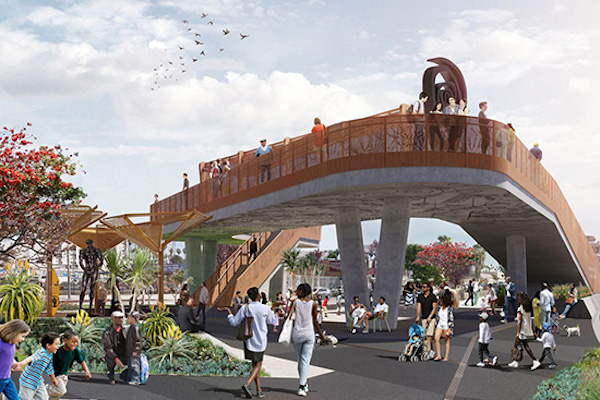
19. Destination Crenshaw
2024
Crenshaw Boulevard corridor between Leimert Park and Hyde Park
A unique 1.3-mile outdoor art gallery featuring permanent and temporary works, integrated with pocket parks, street furniture and landscaping makes up Destination Crenshaw. Designed by Zena Howard, the project, slated to open in 2023, will highlight the art, stories, creative energy and rich African American and African cultural heritage of the Crenshaw Corridor. The focal point of this linear art project is the triangular Sankofa Park (currently a construction site), sandwiched between Vernon Avenue and the northern tunnel portal of the Metro K Line, where many of the structures of Destination Crenshaw are already visible.
BONUS: THE OFFICIAL MILITANT ANGELENO EPIC CICLAVIA TOUR FOOD GUIDE!
Buongiorno Pizza E Pasta
2124 S. Central Avenue, South Central Los Angeles
Open Mon – Sun 12 p.m. – 12 a.m.
Wait, what? An authentic Italian restaurant…in South Central? This has piqued The Militant’s curiosity. The place boasts being a “chef-owned restaurant” and their Yelp reviews look rather impressive. They don’t sell slices though. But The Militant feels compelled to check this out on Sunday.
Southern Girl Desserts
3650 Martin Luther King Jr. Blvd, Suite 100 (in Baldwin Hills Crenshaw Plaza, 1st Floor, near Sears)
Open Tue-Sun 12 p.m. – 6 p.m.; Closed Mon
Though the Baldwin Hills Crenshaw Plaza has a requisite shopping mall food court, it’s best to skip it altogether and head towards the south side of the mall on the ground floor where you can find Southern Girl Desserts. Run by Florida natives Catarah Coleman and Shoneji Robison (who call themselves “The Dessert Divas”), they won Food Network’s Cupcake Wars competition with their signature Chicken & Waffle Cupcake and used their experience in cupcake warfare to open Southern Girl Desserts. Other cupcake flavors of note are Hennessy & Coke, Pecan Pie and Peach Cobbler. They also have standard (and still really excellent) standard cupcake varieties like Red Velvet, Sweet Potato, Double Chocolate and Vanilla. Speaking of Sweet Potato Pie, they also serve up some of that as well as Pecan Pies in mini sizes, and for full-size pies, you have to order in advance. They also make excellent cakes and cookies.
Post & Beam
3767 Santa Rosalia Dr, Crenshaw District
Open Wed-Sat, 5 p.m. – 10 p.m.; Sun, 11 a.m. – 4 p.m.
This acclaimed Californian-meets-Soul-Food-fusion spot located behind Baldwin Hills Crenshaw Plaza is all the rage for Sunday brunch and evening Happy Hours.
All Chill Ice Cream
4315 W 43rd Place, Leimert Park
Open Thu-Sun 12 p.m. – 7 p.m.; Closed Mon-Wed
Located just steps from the K Line Leimert Park station entrance (turn left) is All Chill, which bills themselves as a “Hip-Hop Ice Cream Shop.” No, you won’t find gimmicky-named flavors like “The Notorious F.I.G.” or anything like that, but they do serve unique “craft”-style flavors (the Whiskey Praline is a MUST here) in a store setting that doubles as a hip-hop memorabilia museum, replete with concert posters, photographs and artwork adorning the walls. In business since 2020, they’re open Thursday through Sunday, so if you’re here for the African Marketplace (which has a collection of notable food stalls in itself), definitely check them out.
Ackee Bamboo
4305 Degnan Blvd. Suite 100, Leimert Park
Open Tue-Thu, 11 a.m. – 8 p.m.; Fri-Sat, 11 a.m. – 9 p.m.; Sun 11:30 a.m. – 6 p.m.; Closed Mon
Open since 2004, this has been The Militant’s go-to for Jamaican food in Leimert Park. The Jerk Chicken (and other variations) are excellent here, as with their Jamaican Patties appetizers. But their vegetarian dishes are worth trying as well, especially their Jackfruit and namesake Ackee (Jamaica’s national fruit) selections.
Wah Gwaan Jamaican Kitchen
4371 Crenshaw Boulevard, Leimert Park
Mon -Thu 11 a.m. – 9 p.m.; Fri – Sat: 11 a.m. – 10 p.m.; Sun: 12 p.m. – 8 p.m.
Though Ackee is The Militant’s traditional jam whenever he’s in Leimert, sometimes they’re not open, or they open later on Sunday for some reason. Or maybe there’s a long wait to get seated. Never fear, for Wah Gwaan, located right at the end hub of CicLAvia, is another excellent Jamaican spot in the area. He enjoyed a nice Jerk Chicken plate and some patties during the Metro (K) Line’s opening weekend last year and can attest to their legitimacy.

You must be logged in to post a comment.